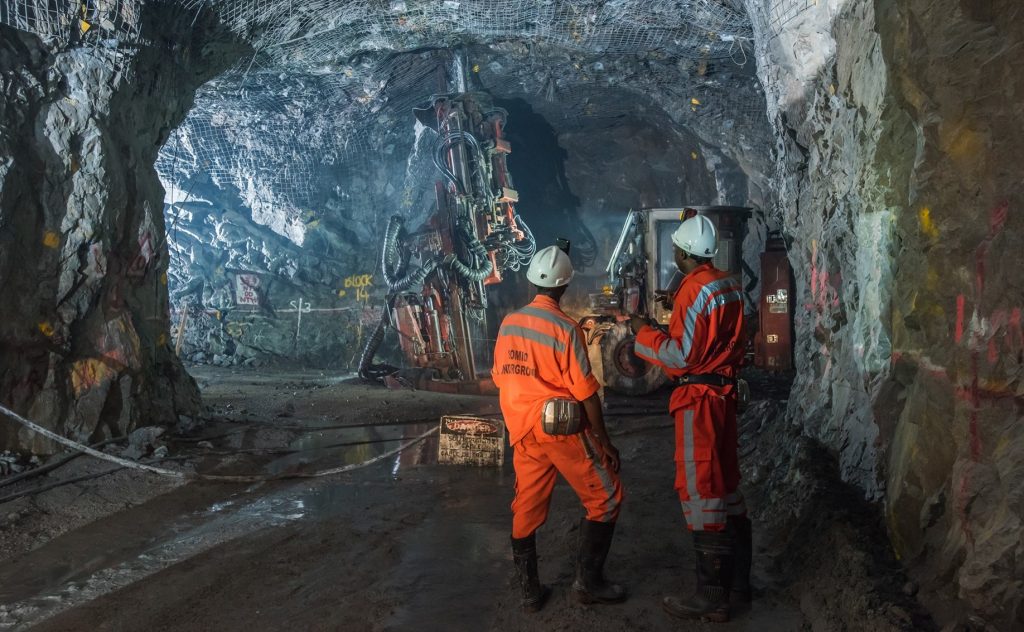In our last post, we delved into mine sequencing and short-term production scheduling software, tools and strategies to achieve the production goals while meeting the constraints. Now, let’s look at monitoring, evaluating, calibration and the importance of continual updating throughout the life of the mine.

Economic success over the life of a block cave mine relies on continuous monitoring and evaluation of the operations so that the production schedule can reflect changes for implementation.
A production schedule is a plan, not the reality of a mine in operation. Things happen. Unplanned upsets introduce variabilities a plan might not have anticipated. A successful medium- and long-term plan depends on continuous monitoring once operations commence, so that as unforeseen events arise, operators have time to adjust. Simulation optimization methods can help to achieve more reliable mine plans.
Safety and Sustainability
Block caving presents geotechnical hazards that require risk and safety monitoring to maintain a sustainable operation. Internal instrumentation monitoring pore pressure, stress, deformation, load, and cave propagation can provide insight into the internal stability of the rock mass as well as provide indicators of potential failures. Key internal instrumentation might include Multipoint Borehole Extensometers (MPBX), in-place inclinometers (IPI), time domain reflectometry (TDR), seismic monitoring, open borehole cameras, Networked Smart Markers, instrumented rock and cable bolts, embedment strain gauges, borehole and New Australian Tunnelling Method (NATM) pressure cells, borehole stressmeters, and piezometers.
External instruments are used to corroborate the internal deformation and stress information and to monitor the topographic surface. External instrumentation includes tape extensometers, laser distance sensors, prisms, crackmeters, LiDAR laser scanners, and satellite interferometric synthetic aperture radar (InSAR).
These combined technologies provide improved insight into mining-induced ground responses, greater transparency in managing risk, numerical model calibration, and indicators needed to ensure that the cave is operating at the highest level of safety and productivity.
KPIs and KVIs
Over the life of the mine, block caving can be highly efficient economically after the initial capital investments for underground infrastructure. That efficiency, however, relies on continuous monitoring throughout operations so that adjustments can be made to the production schedule as needed.
Production rates must be monitored, along with grade control, processing recovery, quality, quantity, mine efficiency, productivity, and actual operating cost versus estimated costs in the plan. A production schedule assumes that certain key parameters are constant, but many parameters represent probabilities. For example, development rate defines the maximum feasible number of drawpoints to be opened at any given time within the scheduled horizon, this is often adjusted depending on the rock mass stress regime in which construction will take place. Drawpoint construction sequence (the order in which the drawpoints will be constructed) is also a function of the undercut sequence.
Planning for maximum opened production area at any given time depends on infrastructure and equipment availability as well as on ventilation resources. Many active drawpoints might encounter serious operational problems such as excessive haulage distance and problems related to the movement of equipment within the active drawpoints.

The GEOVIA User community: a community by and for GEOVIA users
Discover the community of reference for GEOVIA peer-to-peer support, materials and expert insights!
- Get started and make the most of your GEOVIA software
- Become an expert in your domain of interest
- Share your knowledge and experience
- Get help from experienced users
New member? Create an account, it’s free!
Learn more about this community HERE.
